
Introduction
With over 600 million blogs on the web, it's no secret that blog posts are an essential part of online content. But why is writing effective blog posts so important?
Well, consider this: Blogging is not just about sharing your thoughts or ideas. It's about connecting with your audience, building credibility, and yes, boosting your visibility on search engines. A well-crafted blog post can captivate readers, spark conversations, and even convert casual readers into customers or followers.
For businesses and new startups, the importance of writing quality content cannot be overstated. A consistent output of high-quality blog posts helps establish your brand's voice and shows potential customers that you're knowledgeable in your field. This is particularly crucial if you're lacking in backlinks - quality content can help attract traffic to your site.
Moreover, high-quality content can significantly increase your conversion rate. By providing valuable information, solving problems, or entertaining your audience through your blog posts, you increase the chances of turning a casual visitor into a loyal customer. So don't underestimate the power of a well-written blog post; it could very well be the key to your business's growth in 2025 and beyond.
So what does blog writing look like in 2025?
Think AI-powered content strategies, voice search optimization, and the rise of multimedia content. The world of blogging in 2025 is both exciting and challenging. With the ever-growing number of blogs, standing out from the crowd is harder than ever. Moreover, the constant Google algorithm updates make it even more difficult.
With the right ai writing tools for seo and techniques (which we'll delve into), you can write blog posts that not only engage your audience but also set you apart from the competition in minutes.
What Makes a Good Blog Post?
A great blog post is like a well-crafted dish at a popular restaurant; it follows a specific recipe. While the ingredients may vary based on your personal style and the topic you're covering, there are certain key elements that every successful blog post has in common:
1. Engaging Headline
A compelling headline is the bait that draws readers to your content. It should be intriguing, catchy yet precise.
2. Table of Content
A table of content helps navigate through your blog post effortlessly. This is especially useful for longer posts or articles that cover various subtopics within the main topic. It allows your readers to jump to sections that interest them the most. Additionally, it effectively tackles low attention span and helps reduce bounce rate by providing an overview and easy navigation.
3. Interactive Elements
Engage your readers beyond just the text. Incorporate interactive elements like polls, quizzes, Social Sharing Buttons, infographics or even videos. These components not only make your blog post more interesting but also increase the time spent by readers on your page.
4. Valuable Content
Readers love to leave with something tangible - whether it's a solution to their problem or new knowledge. Your content should always provide value and satisfy the reader's curiosity or need.
5. Readable Format
Long paragraphs are outdated! Break your content into easily understandable sections with clear headings and subheadings. Bullet points and lists can also make your post easier to skim through.
6. Visual Appeal
In this age of Instagram and Pinterest, visuals are important! Include relevant images, infographics or videos throughout your content to make it more appealing.
7. A Strong Call-to-Action (CTA)
Don't just leave your readers hanging at the end of the post! Encourage further engagement with a powerful CTA, whether it's asking them to comment, share or subscribe.
8. Meta Title
The meta title is the first thing users see in search results, so it needs to be compelling and accurately reflect the content. Include relevant keywords to improve visibility and attract the right audience.
9. Meta Description
The meta description is a brief summary of the post that appears below the title in search results. Use this space wisely to entice readers to click by highlighting the value they'll get from reading your post.
"A good blog post is not defined by its length or vocabulary, but by the impact it leaves on its readers.
1. Find Your Target Audience

First things first, who are you writing for? Identifying your target audience is the cornerstone of creating engaging and impactful blog content.
Here's how you can get started:
- Define Your Ideal Reader: Pinpoint their age, gender, occupation, interests, and values. This will help you tailor your content to their specific needs and preferences.
- Conduct Market Research: Use online tools such as Ahref or Semrush and surveys to gather data about your potential readers. This includes understanding their pain points and the questions they're asking. Make use of platforms like Quora, Reddit or even social media channels to tap into these insights.
- Analyze Your Competitors: Look at other blogs in your niche from a unique angle. Who are they targeting? What topics are they covering? This can give you a sense of what works (and what doesn't) for your target audience.
- Develop Formal Buyer Personas: Based on your research, create formal buyer personas - fictional representations of your ideal reader. Each persona should include demographic information, behavioral traits, needs, motivations. These personas will serve as concrete guides in creating content that resonates with your intended audience.
But there's a word of caution here: targeting the wrong audience can have detrimental effects on your blog's success. It's like aiming an arrow in the dark - it wouldn't hit the mark. If your content doesn't resonate with your readers, it won't engage them or inspire action. At worst, if you get a lot of traffic from aiming at the wrong target, it could cost you money. This can be in the form of burning through your email sign-up quota or exhausting free usage from the wrong audience. Moreover, it can lead to lower traffic, fewer shares and likes and ultimately a decrease in the longevity of your blog.
Remember this golden rule:
'When you're writing for everyone, you're writing for no one.'
2. Understand Search Intent
By comprehending the various types of search intents, you can refine your blog topics to be more in line with what your audience is actively seeking.
1. Navigation Search Intent
This type of search intent refers to users who are searching for a specific website or page. They already know where they want to go; they just need help getting there. For instance, someone might type "Pinterest login" into Google because it’s quicker than typing out the full URL.
In terms of blog content, navigation intent isn't necessarily something you should focus on unless you're a well-known brand or have a highly recognized blog. However, it's essential to understand that this form of search intent exists.
2. Informational (Learning) Search Intent
Here, users are in quest mode for knowledge or information about a particular topic or question. Examples include searches like "How to bake a chocolate cake?" or "Symptoms of flu". This is where your informative, educational blog posts can shine! Provide valuable insights to these knowledge-thirsty web surfers and make your content irresistible.
3. Consideration Search Intent
Also known as commercial investigation, consideration search intent involves users who are aware of their needs but are comparing different solutions, products, or services before making a decision. A search like "Mac vs PC for graphic design" falls under this category.
If your blog is product-related or if you offer services, creating content that showcases comparisons, pros and cons, reviews etc., can be highly beneficial here.
4. Transactional Search Intent
This is the sweet spot where users have made up their minds and are ready to pull out their wallets for purchase. They might be searching for terms like "Buy iPhone 12 online" or "Sign up for yoga classes".
For transactional intent, your content can gear towards securing that purchase. Craft compelling CTAs (Call To Actions), incorporate persuasive language and present irresistible offers that would convert these ready buyers!
By understanding these different types of search intents, you can tailor your blog topics and content strategy accordingly.
Here's an idea: Why not let AI writing tools such as Junia AI lend a hand in researching and analyzing search intent for your blog post? After all, our AI is trained on an extensive range of dataset.
Here are a few tips on how Junia AI can help you!
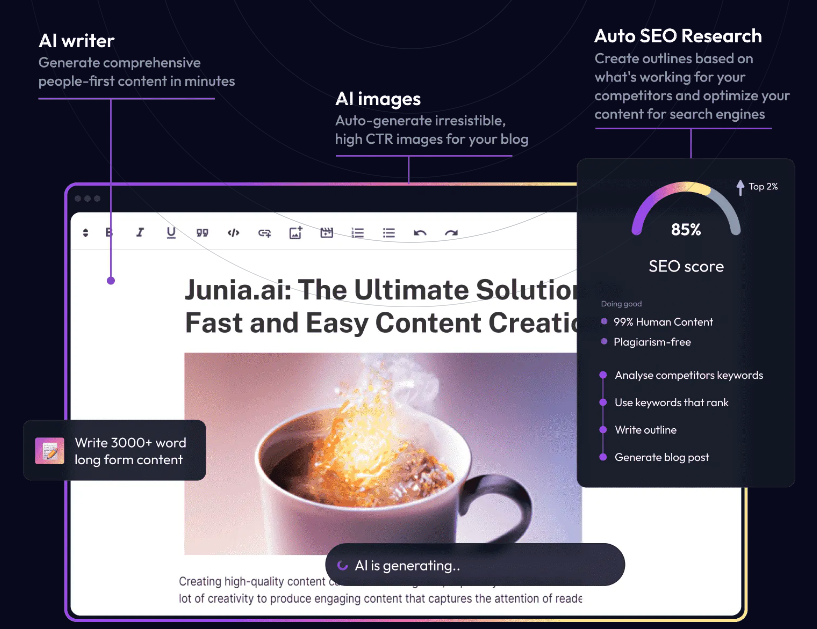
1. Finding the Right Keywords
Junia AI is adept at pinpointing the right keywords that your audience is likely to use in their search queries. It can help you answer that all-important question: 'What is your intended audience likely to search for?' This can be a game-changer when crafting content aimed at readers who are ready to make a purchase.
2. Understanding Search Intent
Junia AI isn’t just good with keywords, it also understands the nuances of search intent. Whether your potential reader is looking for information, trying to make a decision between options, or ready to pull out their wallet for purchase, Junia can help you tailor your content to match their intent.
3. Crafting Compelling CTAs
Junia can aid in crafting compelling CTAs (Call To Actions). By incorporating persuasive language and irresistible offers, you'll be better equipped to convert those ready buyers!
3. Find Blog Topics That Convert
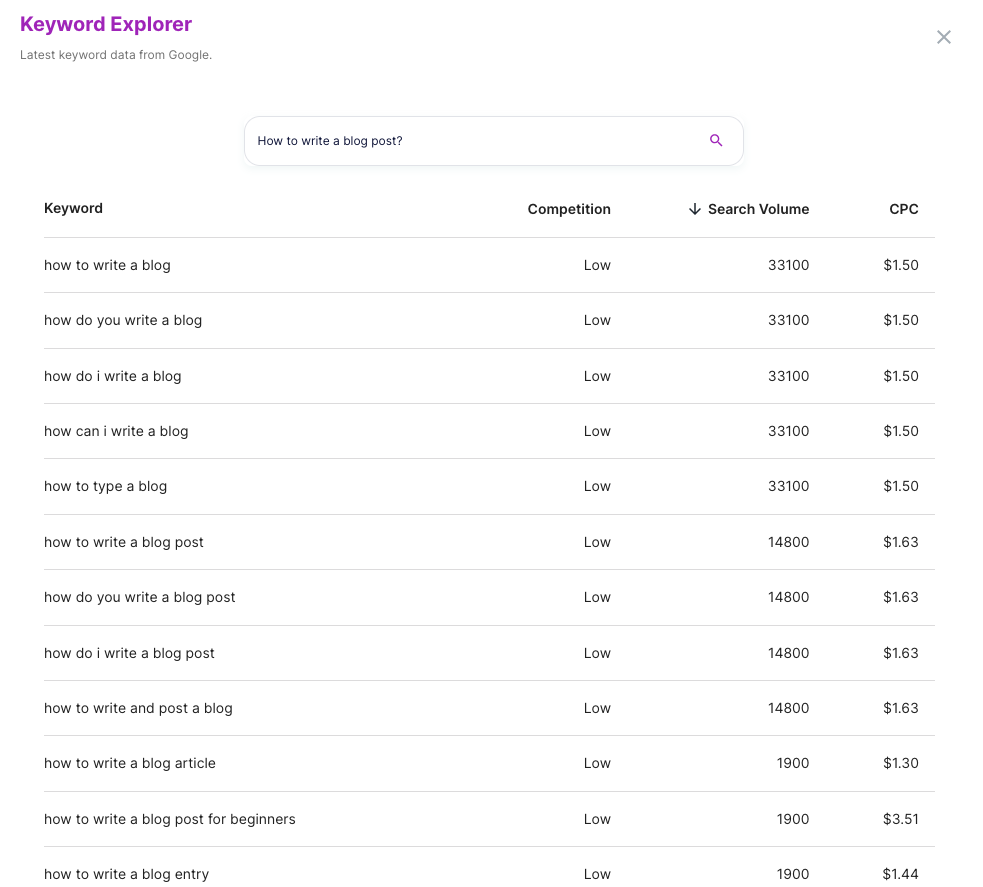
One of the most important things to think about when coming up with blog ideas is what your target audience is likely to search for. This is especially true if you want to attract people who are ready to buy something.
Knowing the main words, phrases, or questions that your potential readers might use when they search online - also known as keywords - is really important. It helps you create content that is relevant and interesting, and it also increases the chances of your blog showing up in their search results.
Here's an example to help explain this idea. Let's say your blog is all about 'natural skincare'. Instead of writing a generic post like 'Benefits of Natural Skincare', why not focus on more specific topics that your readers will find useful? Things like 'Best Natural Skincare Products for Acne-Prone Skin' or 'Easy Ways to Add Natural Skincare to Your Daily Routine' could be great choices. These topics are not only more targeted and helpful for your reader, but they also include long-tail keywords - phrases that are very specific and not used as often as other types of keywords.
Target Long-Tail Keywords
Long-tail keywords might have less search volumes, but they've got a secret superpower - they often lead to higher conversion rates! How so? Well, it's because these keywords attract individuals who are further along in their buying journey; consumers who have a clear picture of what they want and are just a step away from making a buying decision. Thus, these longer, often question-based keywords help keep your post laser-focused on the exact needs and desires of your target audience.
Niche Down Your Blog Topic
Another essential ingredient in the recipe for a successful blog is to niche down your topic as much as possible.
Why is this important? By finding niche content ideas helps position you as an authority in that particular subject matter. This not only builds credibility and trust with your audience but can also lead to higher engagement rates. Plus, it makes it easier for you to create targeted content that truly resonates with and provides value to your readers - which ultimately is what blogging success boils down to!
4. Write the Perfect Headline
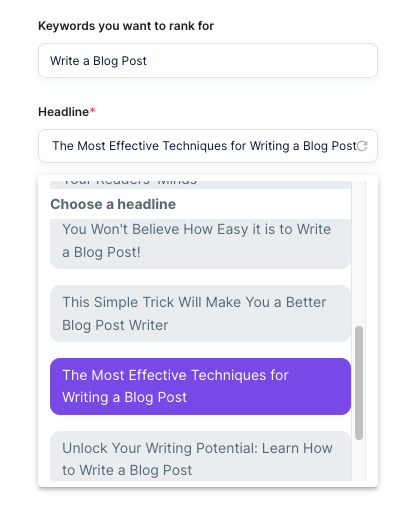
Writing an eye-catching headline is about as important as it gets when it comes to creating a compelling blog post. It's the first thing your readers see, the hook that reels them in. A captivating headline can mean the difference between a click and a pass-by, so it's crucial to get it right. But crafting such a headline is a delicate balancing act between art and science.
When you're writing a headline, think of it as your first impression. It's like shaking hands with someone new or stepping onto the stage for your big moment in the spotlight. Your headline needs to be strong, confident, and intriguing. It should make people want to know more about what you have to say.
But remember, while you want your headline to be exciting and engaging, you don't want it to become clickbaity. It's easy to fall into the trap of using sensationalist phrases or deceptive information just to garner attention. However, this tactic often backfires, leading to disappointed readers who feel misled.
"The best headlines tell what the article is about, but leave enough mystery to make people want to read on."
Tips to Craft Attention-Grabbing Headlines
It's not magic or mere luck that makes a headline irresistible. It's a mix of creativity, understanding your audience, and applying tried-and-true strategies.
- Promise Value: Ensure your headline communicates the benefits your post offers. What will readers gain from investing their time reading your post?
- Create Curiosity: Use mystery and intrigue to pique the reader’s interest.
- Use Powerful Words: Words like ‘ultimate,’ ‘essential,’ ‘quick,’ can add punch and make your headlines more compelling.
- Keep it Simple and Clear: Don’t sacrifice clarity for cleverness. Your readers should instantly understand what your post is about.
Examples of Compelling Headline Formulas
To help you visualize these tips in action, let’s look at some successful headline formulas:
1. "How To (Achieve Something) In (Specific Time Frame)".
Example: "How To Learn French In Just 30 Days"
2. "Number Ways To (Achieve Something/ Solve a Problem)".
Example: "10 Ways To Boost Your Productivity While Working From Home"
3. "The Secret To (Achieving Something/ Solving a Problem)".
Example: "The Secret To Making Perfect Pancakes Every Time"
These formulas work because they promise value (learning French, boosting productivity), create curiosity (the secret), and use powerful words (boost).
Ultimately, writing an effective blog post headline is about understanding your audience and what they're interested in. Take time to research popular keywords in your niche and consider what types of headlines are most likely to attract attention from those who are genuinely interested in what you have to say.
Remember: Your goal isn't just to get clicks - it's also about delivering value once people arrive at your blog. That starts with an honest and engaging headline!
Tip: You can use Junia AI to create eye-catching headlines for your blog. Simply input a keyword.
5. Create a comprehensive blog outline

Think of a blog outline as your own personal writing GPS. It's what keeps you on track as you craft a killer blog post. It helps you plan out your ideas, avoid any pitfalls, and make sure every word adds something special to your final piece.
Picture this: if you're going on a road trip across the country, you wouldn't just jump in your car and start driving randomly, right? Of course not! You'd likely plan out the best or most beautiful route, note down cool spots to visit along the way, and maybe even decide where to stop for food or rest. The same goes when writing an awesome blog post.
Without a clear outline:
- You might get sidetracked and confuse your readers.
- You could forget key points that back up your ideas.
- You may lose sight of the main message you’re trying to get across.
And what happens then? A confusing mix of words that leaves readers puzzled, clicking away from your post (and trust us, that's not what you want!).
So remember, a well-thought-out blog outline is your secret tool for creating content that is easy to understand, straight to the point, and utterly engaging... every time!
Now, let's talk about how AI fits into all this. With a blog outline that includes talking points, keywords, and writing instructions, AI can help ensure your content stays on track and is reliable. So why not give it a go?
Tip: With Junia AI, you can easily create the perfect blog outline every single time.
6. Write Clear and Concise Introductions
Ever wondered why some blog posts hook you in from the first line, while others leave you yawning in boredom? The secret lies in the introduction. A captivating introduction is your golden ticket to winning over readers. Remember, you only have a few seconds to make an impression and pique their interest. So, how do you create introductions that seduce your readers into wanting more?
First things first, establish a connection. Your introduction should speak directly to your reader's needs, wants, or problems. Ask them a question or present a scenario they can relate to.
Example: Are you tired of spending hours cleaning your home only for it to be messy again in no time? (This can be an excellent introduction for a blog post about easy and quick cleaning tips.)
Incorporating statistics can also work wonders. Numbers add credibility and show readers that you've done your research.
Example: Did you know that 80% of new businesses fail within their first year? (A perfect opener for a blog post providing tips for successful startups.)
Storytelling is yet another powerful technique. A well-told story can immediately draw readers in and make them eager to read more.
Example: I'll never forget the day when my laptop crashed just 10 minutes before my final college presentation due.
Now you've got the attention of your readers, it's equally important to retain it throughout the post. This is where a table of content comes into play. Including one at the beginning of your blog post gives readers an overview of what they can expect and allows them to quickly navigate to sections they're most interested in.
Here's how it could look:
- Establish Connection
- Incorporate Statistics
- Storytelling Technique
- Include Table of Content
7. Establish your brand voice
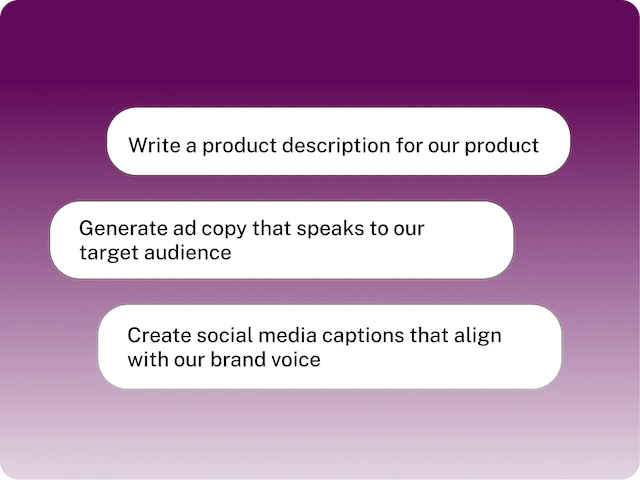
Your brand voice is more than just the words you choose. It's your company's personality, the emotions you evoke, and the promises you make to your audience. Your brand voice should be as unique as you are, and most importantly, it needs to be consistent.
Especially if you are generating blog posts with AI, a brand voice helps add a human touch. It allows your audience to connect with your brand on a deeper level by providing consistency and personality throughout your content. Not only can it help improve SEO and make your content stand out amid the competition, but it also enhances your overall brand image. This in turn builds trust and loyalty among your audience. Let's break it down:
Personality
Think of your brand as a person. What kind of personality does it have? Is it bold and adventurous or calm and nurturing? Your brand voice should reflect this personality in every piece of content you create.
For example:
If your brand were a person, would it be an adventurous risk-taker like Richard Branson or a wise and nurturing figure like Oprah Winfrey?
Emotions
The best brands in the world inspire loyalty not just because they offer great products or services, but also because they evoke strong emotions in their customers. What emotion do you want your brand to evoke? Excitement? Trust? Joy? Your brand voice should consistently trigger these feelings.
Consider this quote:
"People will forget what you said, people will forget what you did, but people will never forget how you made them feel." - Maya Angelou.
Promise
Your brand promise is a commitment to deliver specific benefits to your customers. It sets their expectations for what they can expect from your products or services. Your brand voice plays a crucial role in communicating this promise effectively.
Here's an example:
Apple's promise is to provide user-friendly technology that enhances people's lives. Their brand voice is innovative, inspiring, and sleek.
Remember, consistency is key! Using your unique brand voice consistently across your blog posts will help build trust with your audience and ultimately contribute to the growth of your business.
8. Provide Actual Values
Think about your audience. What problems are they struggling with? What questions are they asking? When writing your blog posts, put yourself in their shoes. Use empathy and understanding to provide solutions that will resonate with them.
For instance, let's say you are writing a blog post on "How to Write a Novel." Don't just give generic advice such as "write every day" or "read more books." Go deeper! Answer questions like:
- How to develop complex characters?
- How to plot a gripping storyline?
- How can technology aid in writing a novel?
This way, not only are you engaging your audience, but you're also providing valuable advice based on their needs.
Create Informative and Actionable Content
Your readers should walk away from your blog post feeling like they've learned something new and have clear steps on what to do next. To achieve this:
- Break up complex ideas: Use subheadings, bullet points, or numbered lists to break down complicated concepts.
- Use case studies: Real-life examples help readers understand the practical application of your advice.
- Include actionable steps: At the end of each section or point, provide clear steps that readers can take immediately.
- Offer Valuable Resources. Link to other reliable sources or provide downloadable resources like guides, templates, or checklists. These additional materials not only add value to your content but also make it more practical and beneficial for your readers.
- Utilize Visual Elements. Incorporating visual elements in your blog post can help you connect with your audience more effectively. Use charts, infographics, diagrams, or even memes to illustrate your points and make the content more engaging. However, ensure these visuals are relevant and enhance the overall understanding of the topic.
- Engage with Your Audience. Encourage your readers to interact by asking questions or inviting them to comment on your post. This interaction can lead to a vibrant community around your blog, making it more likely that visitors will return. It also provides you with valuable feedback on what resonates with your audience.
- Update Regularly. Keep your content fresh and relevant by regularly updating it with new information or resources as they become available. This not only keeps the blog post current but also shows readers that you're committed to providing them with the latest and most accurate information.
Ensure sufficient word counts and comprehensiveness
When creating a blog post, it's important to hit the "just right" mark - your content shouldn't be too short or overly long. The "just right" length can vary depending on your readers and the topic you're discussing. Aim for at least 4000 words for an in-depth blog post. But, this doesn't mean filling your content with unnecessary details; instead, focus on providing a complete understanding of your topic.
In other words, Length is strength. But remember, it's not just about having lengthy content but ensuring that each word adds value to your reader.
Here, 'complete' means diving into your topic to provide valuable insights without overwhelming your reader with information. It's about striking the right balance between answering the reader's questions and keeping them engaged.
To ensure completeness:
- Cover all important aspects of your topic: Leave no questions unanswered. Conduct thorough research and make sure you discuss all key points related to your subject.
- Use subheadings: Divide your content into smaller, manageable sections using subheadings. This not only improves the readability of your post but also allows you to systematically address different aspects of your topic.
- Include relevant examples and data: Support your ideas with relevant examples and data to make your content more enriching and informative.
- Cite your sources: If you refer to information or statistics from another source, always provide a citation or link back to the original source. This not only lends credibility to your content but also respects the original author's work. Incorporate visuals: Depending on the complexity of your topic, consider using infographics, charts, or diagrams to illustrate your points. Visual aids can help simplify complex information, making it easier for your audience to understand and retain the material.
- Engage with your readers: Encourage interaction by ending your articles with a question or a call-to-action (CTA). This strategy can stimulate discussion in the comments section and foster a sense of community among your readers.
- Ensure consistency: Make sure your tone and writing style remain consistent throughout the article. A sudden shift in tone or style can confuse readers and detract from the overall message of your content. If you're using humor or informal language, for instance, keep it steady from start to finish.
Remember, quality is more important than quantity. A short post packed with valuable insights is much better than a long one filled with irrelevant information. So focus on making each word count!
You might find online tools like WordCounter or Yoast SEO useful for tracking word counts and ensuring depth in your content. These tools can help maintain an ideal length while ensuring SEO-friendly keyword density.
Finally, never underestimate the importance of formatting for readability. Use bullet points or numbered lists when listing steps or items. Use block quotes to emphasize important statements or quotes. And use bold or italic text to highlight key phrases or words.
Remember: Your ultimate aim is to provide a fulfilling read that leaves your readers feeling enlightened and motivated - so every word, every point, and every formatting choice should contribute towards that goal!
.jpeg?token=eyJhbGciOiJIUzI1NiIsInR5cCI6IkpXVCJ9.eyJ1cmwiOiJ1c2VyLWdlbmVyYXRlZC1pbWFnZXMvZjJmOThkNWUtNjNjNC00MTJiLTkyY2QtZjgyNDI5NTE3YWRkL0YwOWFnYi1XSUFBTTNkOSAoMSkuanBlZyIsImlhdCI6MTY5MTEwNDI1OCwiZXhwIjoxODQ4Nzg0MjU4fQ.NE-C2DXUsFkXfB3Jzhwq6B_yzZlHGkrua8vkLGPsl_Y)
Tip: With Junia AI, you can effortlessly generate a comprehensive, long-form blog post that's over 4000 words long in just minutes.
9. End with Motivational Closings
You've taken your readers on a journey, delivering captivating advice and engaging content. But, what's the final ingredient to top off this delightful dish? Motivational closings. They are the sweet dessert that leaves a lasting and satisfying impression on your reader's palate.
Think of it this way: you've been in a conversation with your readers throughout the blog post, wouldn't you like to leave them feeling inspired, motivated, or at least with a sense of fulfillment? That's the magic of a compelling closing statement. It can keep readers coming back for more. So let's dig into some techniques to create that memorable ending.
1. Invoke Emotion:
"When you evoke emotions, you forge connections."
Create an emotional hook that resonates with your readers. Share a personal anecdote or perhaps a powerful quote that aligns with your topic. A good example is how Seth Godin often ends his posts on an optimistic note, making his readers feel empowered.
2. Call to Action (CTA):
"Great endings often have great beginnings."
In other words, remind your readers why they started reading in the first place. What was their pain point? What solution were they seeking? Summarize their journey and guide them towards action – subscribing, sharing your post, or even implementing the advice given.
3. Ask Open-Ended Questions:
Aim to stimulate thought and encourage interaction by asking open-ended questions related to your post's topic. This not only sparks curiosity but also invites comments and discussions.
Now that we've explored some techniques, let's look at an example:
"So there you have it – my tried and tested methods for staying productive while working from home. It wasn't easy but I learned to thrive in chaos, and so can you! Remember, every day is a new opportunity for growth. How will you make the most out of tomorrow?"
This closing statement evokes emotion (optimism), includes a call-to-action (encourages readers to apply the methods shared) and ends with an open-ended question (stimulating thought).
10. Include Visuals in Your Blog Posts
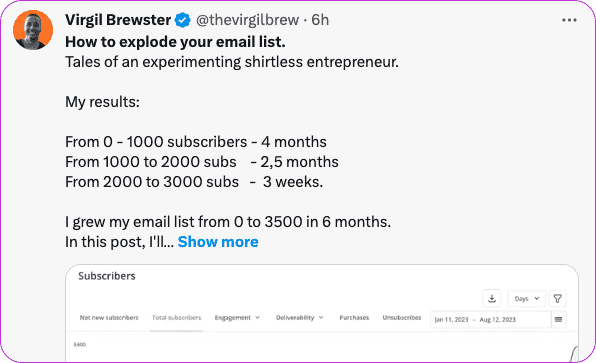
They say a picture is worth a thousand words, and who are we to disagree? Including relevant visuals - images, infographics, charts, GIFs etc., in your blog posts can significantly enhance your content's appeal.
Why Use Visuals?
Well, here are a few reasons:
- Enhances Understanding: Complex concepts and data can be simplified with visuals, making it easier for readers to grasp.
- Boosts Engagement: A well-placed image or infographic can break up large blocks of text, making the post more readable and engaging.
- Increase Shareability: Social media loves visuals! Posts with images tend to get more shares and likes on platforms like Facebook and Twitter.
"Visuals are like the spice in your favorite dish. They add flavor and interest, making your blog posts more palatable and enjoyable."
Choosing the Right Visuals
Not just any visual will do. It's crucial that you select visuals that align with your content. Here are some tips:
- Relevance: Ensure the visual supports or adds value to the content.
- Quality: Opt for high-resolution images that look professional.
- Originality: Whenever possible, create your own visuals or use royalty-free images to avoid copyright issues.
Tools for Creating Visuals
If you're not a natural-born artist (like most of us), don't fret! There are several tools available to help create stunning visuals. Junia Art, Canva, Piktochart, and Venngage are some popular ones.
Adding visuals to your blog posts is like putting icing on a cake – it makes everything better! So, don't skip this step.
11. Refine and Polish Your Blog Posts
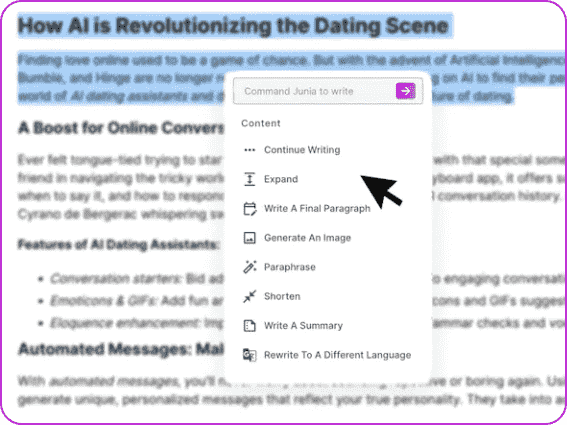
Refining and polishing your blog posts is an absolute must! Why? Because it's not just about getting your thoughts out there. It's also about making sure they're delivered in a way that's clear, concise, and free of errors. Yes, even the most seasoned bloggers and professional freelance writers spend a significant amount of time on this step.
The Importance of Proofreading and Editing
You've probably heard this a thousand times before, but here it is again: proofreading your work is paramount. Every little error can detract from the professionalism of your blog post, causing readers to question the credibility of your content.
Tips for Refining Your Writing Style and Improving Clarity
- Keep sentences short and concise: Long-winded sentences can easily lose a reader's attention. Not to mention they're harder to digest!
- Maintain an active tone: A passive tone can make your writing seem detached or impersonal. An active tone, however, tends to be more engaging.
- Avoid jargon: Unless you're writing for a specialized audience, keep it simple so anyone can understand.
- Be conversational: Write like you speak! This makes your content more relatable and enjoyable to read.
- Repeat key points for emphasis: Repetition (when used sparingly) can help drive home important points.
Tools and Techniques for Polishing Your Blog Posts
Online proofreading tools such as Junia AI's Content Editor are fantastic resources to help catch grammar mistakes, spelling errors, or awkward phrasing.
12. Create a User-Friendly Navigation System
Have you ever found yourself lost in a maze of information, unable to find what you're looking for? If yes, then you know how frustrating it can be. Now, imagine your readers feeling the same way while trying to navigate through your blog post. Not an appealing thought, right? That's where the concept of a user-friendly navigation system comes to play.
Why is Easy Navigation Vital in Blog Posts?
When it comes to writing navigation systems for blog posts, the importance cannot be overstated. The key here is reader retention. A well-structured and easy-to-navigate blog post keeps readers engaged, reducing the chances of them clicking away and increasing their overall time spent on your page.
A good navigation system acts as a road map for your readers, guiding them through your content.
Techniques for Creating a Clear and Intuitive Navigation System
Creating such a navigation system may seem challenging, but don't worry! Here are some techniques to help make the process smoother:
- Logical Structure: Arrange your content in a way that makes sense. Start with broad concepts and gradually delve into specifics.
- Highlight Key Points: Make use of subheadings, bullet points or numbered lists to highlight key points and break down information.
- Internal Linking: Link relevant sections within your blog post. Not only does this help with SEO, but it also allows readers to jump to related topics effortlessly.
- Search Bar: If your blog has numerous posts or pages, including a search bar can prove incredibly helpful. It's like providing a fast-track route to information!
Best Practices for Organizing Your Content
Organizing your content is no less critical than creating it. Here are some best practices:
- Consistency is Key: Keep the layout and structure consistent across all posts. This helps readers familiarize themselves with your style and navigate more effectively.
- Use Descriptive Labels: Use clear, descriptive titles for sections and sub-sections so readers know exactly what they're about to read.
- Avoid Clutter: Keep it simple! Avoid too many categories or tags that might confuse readers.
13. Promote Your Blog Posts
Writing a blog post is only half the battle; promoting it is a whole new adventure. Would you agree that a blog post, no matter how wonderfully written, isn't worth much if it doesn't reach its intended audience?
1. Leverage Social Media for Promotion
Social media platforms are like the bustling marketplaces of the digital world. Facebook, Twitter, Instagram, LinkedIn– all offer unique opportunities to share your content with a wider audience.
Here's what you can do:
- Create catchy snippets or teasers from your blog post to share on different platforms. Each social media channel has its unique vibe and audience, so tailor your message accordingly.
- Use relevant hashtags to increase your post’s discoverability.
- Engage with comments and shares from your followers. Remember that social media is about interaction, not just broadcasting.
2. Max Out Your SEO Potential
One of the most effective ways to increase your blog's visibility is by maximizing your SEO potential. SEO, or Search Engine Optimization, is like the secret sauce that makes search engines fall in love with your blog. Here's are some examples on how you can optimize your blog posts for search engines:
- Keyword Integration: Make sure to include keywords in your title, subheadings, and throughout the content. But remember, it's not just about stuffing keywords anywhere and everywhere. The key (pun intended!) is to make them feel natural within the context of your post. Try using long-tail keywords; these are longer, more specific keyword phrases that visitors are more likely to use when they're closer to a point-of-purchase or when they're using voice search.
- Link Building: Adding links to reputable sources not only provides additional value to your readers but also tells search engines that you mean business. Also, don't forget to link internally to your other blog posts. This keeps readers on your site longer and helps search engines understand the structure of your website.
Bear in mind that while backlinks are important, you can still improve your website's SEO and drive traffic without them by effectively implementing these strategies.
3. Collaboration Opportunities
Collaborating with other bloggers or influencers in your niche can significantly expand your reach.
A few collaboration ideas include:
- Guest posting: Writing a post for another blog. It helps you tap into an established audience and drive traffic back to your site.
- Interviews or Q&A sessions: Featuring industry experts or influencers can draw their followers to your blog.
- Co-hosting webinars or live sessions: Partnering with another blogger for events can draw larger audiences.
4. Parasite SEO
Parasite SEO is a great way to promote your blog posts on high authority websites. By creating content on platforms like Medium, LinkedIn, or Quora and optimizing them with relevant keywords and links back to your blog, you can leverage the authority of these sites to boost your own rankings.
Remember, successful promotion involves trial and error. What works for one blog post might not work for another.
Common Types of Blog Posts
Different types of blog posts cater to diverse reader preferences and content goals. So, what are these common types of blog posts that you can leverage to engage your audience in a meaningful dialog?
Listicles
We all love lists, don't we? They're like a box of chocolates; you know exactly what you're going to get. Listicles offer clear, concise points (like '10 Ways to Improve Your SEO Ranking'). Easy to read and digest, they strike a chord with readers who love actionable content.
How-to Guides
These are instructional pieces that provide step-by-step guidance on accomplishing specific tasks (such as 'How to Write an Effective Blog Post'). A well-written how-to guide can position you as an authority in your field.
Case Studies
Case studies provide real-world examples and hard facts. They delve into a specific issue, investigate it thoroughly, and present solutions based on real-life data. Case studies like 'How Company X Increased Its Revenue by 50% Using Our Product' help demonstrate the practical application and effectiveness of products or strategies.
Interviews
Hosting an interview with an industry expert or influential personality can greatly boost your blog's appeal. Not only does it offer unique insights but it also enhances your credibility.
Reviews
A review post offers a detailed investigation and assessment of a product or service. It helps readers make informed decisions while promoting products you believe in.
Choosing the right type for your content goals is crucial. Ask yourself: What do I want to achieve with this post? If it's about sharing knowledge or teaching something new, a how-to guide could be your best bet. If it's about influencing purchase decisions, reviews or case studies might be more appropriate.
By diversifying your content with various types of blog posts, you'll keep your audience engaged and coming back for more. Remember - variety is the spice of life (and successful blogging)!
Blogging Benefits for Businesses
Blogs aren't just platforms for sharing personal stories and thoughts. In the current digital era, businesses are leveraging blogs to garner a slew of advantages.
- Enhances Search Engine Optimization (SEO): Search engines are fond of fresh, SEO-friendly blog content. Consistently updating your blog with relevant topics and keywords can significantly improve your site's visibility on search engine results pages, driving more organic traffic to your website.
- Establishes Your Business as an Industry Leader: By curating informative, expertly written blog posts tailored to formal buyer personas, you can position your business as an industry leader. This approach not only enhances your credibility but also boosts brand awareness among potential customers.
- Improves Customer Engagement: Blogs serve as the perfect platform for interacting with customers and prospects in a conversational style. By facilitating two-way communication through comments or shares, blogs help foster relationships with both existing and potential customers.
Here's how you can harness these blogging benefits to attract and engage customers:
- Utilize Your Blog as a Marketing Channel: Your blog is a potent tool within your inbound marketing strategy. Regular production of high-quality content that resonates with your target audience draws them towards your products or services organically - no aggressive selling techniques required.
- Incorporate Calls-to-Action (CTAs): Each blog post should include an enticing CTA that motivates readers to take action, be it subscribing to your newsletter, downloading a free resource, scheduling a consultation, or making a purchase.
- Engage With Comments: Interact with readers who comment on your posts by answering their queries, expressing gratitude for their feedback, offering solutions - make them feel valued and heard.
- Promote Your Blog Posts on Social Media: Leverage all your social media platforms to promote your blog posts and reach a broader audience. Encourage social sharing by including share buttons in each post.
Conclusion
As we look ahead, one thing is certain: the future of blogging is bright and full of potential. As technology evolves and reader preferences shift, so too will blogging practices. Stay curious, stay adaptable, and most importantly, keep writing!
